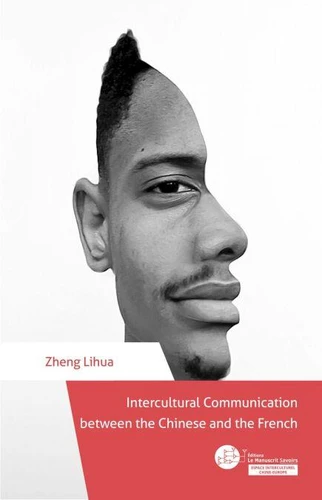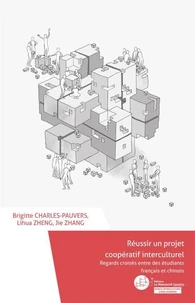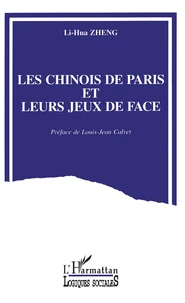Intercultural Communication between Chinese and French
Par :Formats :
Disponible dans votre compte client Decitre ou Furet du Nord dès validation de votre commande. Le format ePub protégé est :
- Compatible avec une lecture sur My Vivlio (smartphone, tablette, ordinateur)
- Compatible avec une lecture sur liseuses Vivlio
- Pour les liseuses autres que Vivlio, vous devez utiliser le logiciel Adobe Digital Edition. Non compatible avec la lecture sur les liseuses Kindle, Remarkable et Sony
- Non compatible avec un achat hors France métropolitaine
 , qui est-ce ?
, qui est-ce ?Notre partenaire de plateforme de lecture numérique où vous retrouverez l'ensemble de vos ebooks gratuitement
Pour en savoir plus sur nos ebooks, consultez notre aide en ligne ici
- Nombre de pages296
- FormatePub
- ISBN978-2-304-04749-3
- EAN9782304047493
- Date de parution19/11/2019
- Protection num.Adobe & CARE
- Taille2 Mo
- Infos supplémentairesepub
- ÉditeurÉditions Le Manuscrit
- PréfacierLouis-Jean Calvet
- TraducteurDavid Read
Résumé
When two people from different cultures meet, they both act in accordance with what is self-evident, that is to say natural, to them, The only problem is that the what is self-evident to some may not coincide with what is self-evident to others. Also, as people have a tendency to consider their way as going without saying or as universal, when others do not act in the same way as they do and there is conflict, they get easily annoyed.
As a French businessman in China once cried out « The Chinese ask me if I eat snake. I say to them: 'I do not eat snake, but swallow insults every day' ». In fact, in intercultural contacts, when people seem strange to others, often, it is perhaps not that they are strange, but because others judge their behaviour with their own cultural criteria. Every culture has its own behavioural logic. However, the logic of some does not correspond to that of others.
Individuals often have the same objectives, but to reach them, they take different cultural paths.
As a French businessman in China once cried out « The Chinese ask me if I eat snake. I say to them: 'I do not eat snake, but swallow insults every day' ». In fact, in intercultural contacts, when people seem strange to others, often, it is perhaps not that they are strange, but because others judge their behaviour with their own cultural criteria. Every culture has its own behavioural logic. However, the logic of some does not correspond to that of others.
Individuals often have the same objectives, but to reach them, they take different cultural paths.
When two people from different cultures meet, they both act in accordance with what is self-evident, that is to say natural, to them, The only problem is that the what is self-evident to some may not coincide with what is self-evident to others. Also, as people have a tendency to consider their way as going without saying or as universal, when others do not act in the same way as they do and there is conflict, they get easily annoyed.
As a French businessman in China once cried out « The Chinese ask me if I eat snake. I say to them: 'I do not eat snake, but swallow insults every day' ». In fact, in intercultural contacts, when people seem strange to others, often, it is perhaps not that they are strange, but because others judge their behaviour with their own cultural criteria. Every culture has its own behavioural logic. However, the logic of some does not correspond to that of others.
Individuals often have the same objectives, but to reach them, they take different cultural paths.
As a French businessman in China once cried out « The Chinese ask me if I eat snake. I say to them: 'I do not eat snake, but swallow insults every day' ». In fact, in intercultural contacts, when people seem strange to others, often, it is perhaps not that they are strange, but because others judge their behaviour with their own cultural criteria. Every culture has its own behavioural logic. However, the logic of some does not correspond to that of others.
Individuals often have the same objectives, but to reach them, they take different cultural paths.















